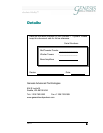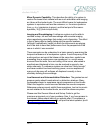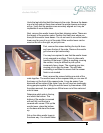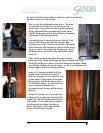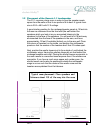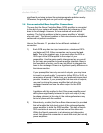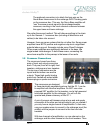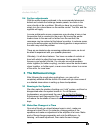
Ver 2.0
10
1010
10
~ÄëçäìíÉ=ÑáÇÉäáíó
significant hum being induced from electromagnetic radiation nearby.
Otherwise, the ground jack can just be left unplugged.
1.4 Servo-controlled Bass Amplifier Connections
The way that the Servo Controlled Bass (SCB) amplifier is connected
to the rest of your system will largely determine the coherency of the
bass to the midrange. However, no one method will work with all
systems. The first big problem is that no power amplifier is “straight
wire with gain”. The second problem is that interconnects and speaker
cables are not perfect conductors.
Hence, the Genesis 1.1 provides for two different methods of
connection.
1) Each SCB amp has two input connectors, unbalanced RCA
and balanced XLR. Either connection can be used but not
both. This is the simplest way, to connect either the RCA or
XLR input of the SCB amplifier to the output of your
preamplifier. Use the same quality interconnect as you would
for the main pre-amplifier to power amplifier interface. Bass is
the foundation of music, and it may be difficult to integrate the
bass to the midrange if there is a significant quality difference in
the interconnection.
If your preamplifier has only one set of outputs, you may have
to invest in a good-quality Y-connector (either RCA or XLR), or
commission a special Y-cable from your preferred interconnect
provider. However, if your preamplifier has two sets of outputs,
use one for driving the power amplifier that will drive the
midrange/ tweeter and use the other output for the SCB
amplifier.
A problem with this method is that if the power amplifier used
shifts phase significantly between its input and output (it may
be phase coherent at its output), the midrange/tweeters may
be out of phase with the woofers.
2) Alternatively, a cable (the Servo-Bass Interconnect) is provided
that will enable the high-level output of the midrange/tweeter
power amplifier to drive the SCB amplifier. This has a Neutrik
XLR connector at one end, and bare wire at the other end.
Within the Neutrik connector is a balancing and attenuation
circuit that allows this connection to work with most (but not all)
power amplifiers.



